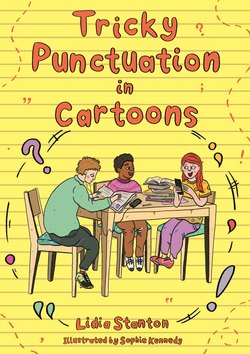Читать книгу Tricky Punctuation in Cartoons - Lidia Stanton - Страница 5
На сайте Литреса книга снята с продажи.
ОглавлениеIntroduction to Educators and Parents
Correct punctuation:
the difference between
a sentence that’s well-written
and a sentence that’s, well, written.
Anonymous
Why another reference guide?
This book does not aspire to be another English language reference guide. Its purpose is to make the correct use of punctuation marks achievable for those who rarely use them in places other than the end of a sentence. The book’s humour-packed content is designed to be easily processed and hard to put down. References to social media humour make it relevant to young people’s everyday experience of electronic literacy.
Most of all, the book’s aim is to demystify a belief that punctuation, like spelling and grammar, is difficult to learn if one does not have strong academic skills, is less of a logical thinker, or has a specific learning difficulty, such as dyslexia. Punctuation does make a lot of sense, but that may not be obvious to someone who does not find traditional SPAG (spelling, punctuation and grammar) classroom instruction or reference guides helpful. This book hopes to ignite, or re-ignite, curiosity about punctuation that might have been lost on some academic journeys.
Who is this book for?
The book is for anyone, but should particularly help learners in Key Stage 2 and 3 (aged 9–15) who:
• prefer to learn by seeing and doing, not extensive reading and/or listening
• have tried traditional SPAG strategies but with limited success
• find it difficult to remember and generalise punctuation rules
• have attentional difficulty and/or poor sequential processing skills
• have dyslexia or other specific learning difficulty (SpLD).
